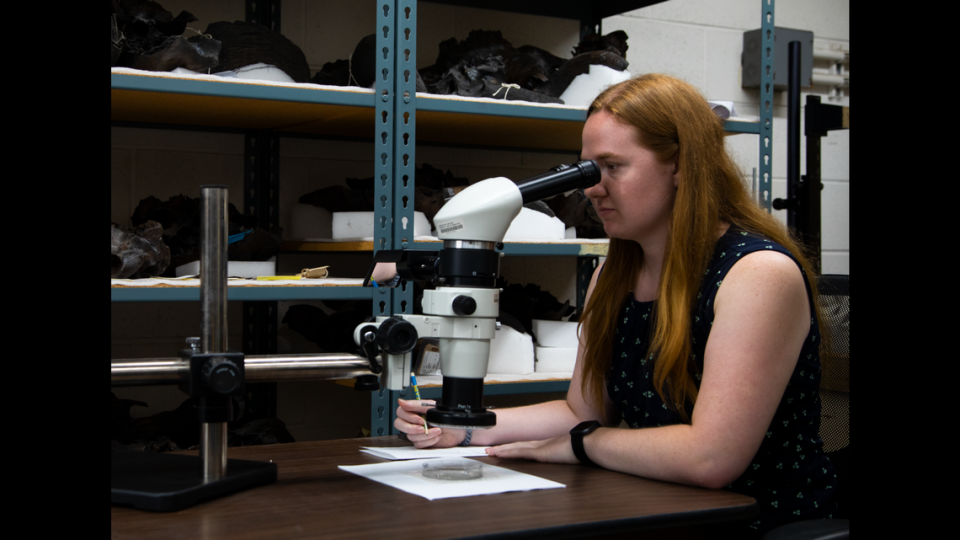Massive creatures roamed CA 13,000 years ago — until humans started fires, experts say
More than 13,000 years ago, massive animals roamed Southern California.
However, they quickly began to disappear, according to an Aug. 18 news release from UCLA’s Institute of the Environment and Sustainability.
“The cause? Humans, catastrophic fires, and an ecosystem made vulnerable by climate change,” according to a news release from the La Brea Tar Pits and Museum.
Though it was previously thought that the huge Ice Age mammals, known as megafauna, were hunted to extinction, researchers from UCLA and the La Brea Tar Pits and Museum now say in a recently published study that wildfires set by humans likely led to their demise.
“The evidence suggests unprecedented fire activity occurring with the changing climate, along with people coming into the area,” Lisa Martinez, a UCLA graduate student and study co-author, said in the release. “It’s during this interval that the megafauna species disappeared.”
Before extinction
Fifteen thousand years ago, large mammals, like the saber-tooth cat, roamed Southern California’s terrain, foraging for food, according to the museum.
Such predators would often find “free lunch” in the “asphalt seeps” where animals became trapped after wandering into “shallow pools to take a drink,” the museum said.
This landscape, however, would soon drastically change, according to the museum.
“Beginning around 14,700 years ago, the climate began turning warmer and drier,” the museum said. “Trees died and herbivores began to disappear, creating an abundance of dry fuels.”
Then, the museum said, came humans.
‘Power to create and control fire’
Just as the land faced “extreme drought,” humans arrived, according to the museum.
“With the power to create and control fire, humans lit up the land,” the museum said.
Humans of the time utilized fire for a number of things, “including to clear brush for travel, to hunt and drive prey, and to promote the growth of plants useful in basketry and medicine,” the university said.
Wildfires, coupled with “a centuries-long megadrought,” forever changed “Southern California’s landscapes, vegetation and ecosystems,” the university said.
“Post-glacial woodlands” were no longer, as shrubby chaparral overtook the area, according to the university.
‘Unique biological record’
Over the course of thousands of years, animals got stuck in the La Brea Tar Pits, preserving their bones. This has allowed the bones to accurately be carbon dated, according to the university.
With its “unique biological record,” the tar pits allow researchers to pinpoint just when megafauna died off, according to Emily Lindsey, a UCLA adjunct professor and an associate curator of the tar pits.
“We used samples from over 170 animals of seven megafauna species — saber-toothed cats, dire wolves, lions, camels, bison, horses and sloths,” Lindsey, study co-author, said in the release. “Around 13,000 years ago, our record of all of those animals stops, and it’s just coyote, coyote, coyote, coyote.”
The disappearance of megafauna coincides with the evidence from the same time period that “suggests that extensive wildfires scorched the region,” the university said.
Evidence of the massive wildfires is found in the abundant charcoal found in “lake sediments across Southern California,” according to the museum.
Such charcoal evidence, likely the result of wildfires, was found in samples of a sediment core from Lake Elsinore, about 80 miles from the tar pits, the university said.
Prior to this time period, “very little charcoal is present in the geological record,” Martinez said.

Parallel to today
In the recently published paper, researchers draw a parallel between the landscape’s transformation 13,000 years ago and “the conditions that today are leading to climate change and devastating wildfires,” the university said.
“Throughout history, fire has magnified the impact of humans, for better or worse,” Glen MacDonald, a UCLA geography professor and study co-author, said. “Humans today are responsible for at least three factors that produce wildfires: the ignitions themselves, climate change and the introduction of invasive species, which changes the fuel structure.”
Researchers hope future studies of specimens from the tar pits can help paint a better picture of “possible effects of a warming planet,” the university said.
“This site is uniquely positioned to inform a lot of questions that are of key environmental significance today — things like what the long-term impacts of climate change will be,” Lindsey said.
Fossils of 73-million-year-old tiny ‘ice mouse’ unearthed in Alaska. ‘A fitting title’
‘Rare find’ of 115-million-year-old fossils unearthed in Maryland. ‘This is a dream’
500-million-year-old sea worm — ‘unknown to science until now’ — discovered in Utah

